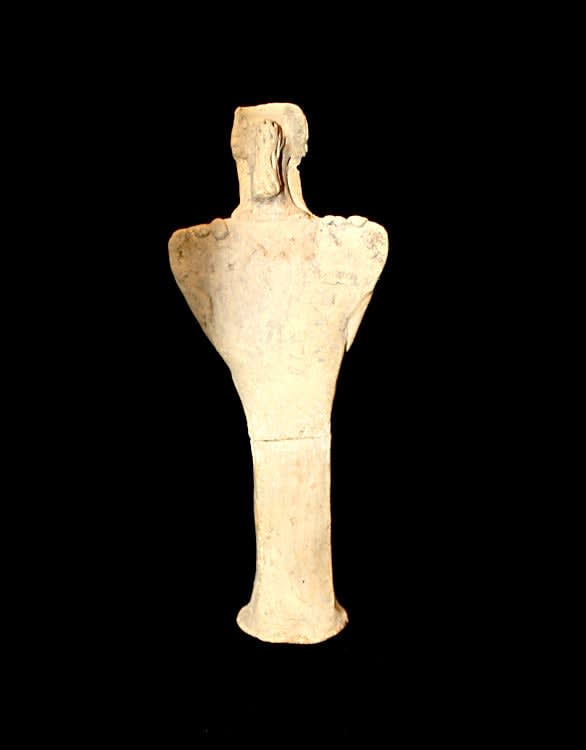Syrio-Hittite Terracotta Fertility Goddess, 2000 BCE - 1500 BCE
Terracotta
PF.2157
The Hittite Empire emerged in central Anatolia from fairly humble agricultural beginnings in the 2nd millennium BC, but by 1340 BC had become the dominant power in Mesopotamia. The expansion...
The Hittite Empire emerged in central Anatolia from fairly humble agricultural beginnings in the 2nd millennium BC, but by 1340 BC had become the dominant power in Mesopotamia. The expansion and consolidation of the empire saw its greatest expression under King Suppiluliumas I (c. 1380 -c. 1346 BC), who oversaw the establishment of a firm Hittite foothold in Syria. This was hotly contested territory, and while the Egyptian behemoth had swept aside most competition, they met extremely fierce opposition from the Hittites. This struggle for domination over Syria continued into the reign of Muwatallis (c. 1320- 1294 B.C.), culminating in the famous battle of Kadesh in 1299 BC. Although Ramses II claimed a great victory, the result was in fact probably more ambiguous. The Egyptians were at a disadvantage in terms or provisioning, and in terms of the great arms race of the time over a great new invention: iron. In any case, the Egyptians took considerable pains to placate local groups, setting up socioeconomic and matrimonial alliances with the Hittites and the lands they now occupied. Although we know comparatively little about Hittite civilisation, it is perhaps significant that these shadowy populations were such a fierce threat to what was then the world's greatest civilization that even Ramses the Great found it more beneficial to be their ally rather than their foe.
The worship of the fertile female, goddesses of nurturing and abundance, dates to the very dawn of human culture. Whether called Astarte, Isis, or Venus, this most essential of deities represents something eternal in human existence. Centuries ago, this abstract clay figure, sold outside some temple complex, was offered as a votive to win the favor of the goddess. We know little about the pilgrim who made this simple gift, though we can guess what he or she asked of the goddess: a life of health, wealth and happiness. As we hold this powerful little figure in our hands today, we realize that the essential values of human nature have changed little over time.
The worship of the fertile female, goddesses of nurturing and abundance, dates to the very dawn of human culture. Whether called Astarte, Isis, or Venus, this most essential of deities represents something eternal in human existence. Centuries ago, this abstract clay figure, sold outside some temple complex, was offered as a votive to win the favor of the goddess. We know little about the pilgrim who made this simple gift, though we can guess what he or she asked of the goddess: a life of health, wealth and happiness. As we hold this powerful little figure in our hands today, we realize that the essential values of human nature have changed little over time.



